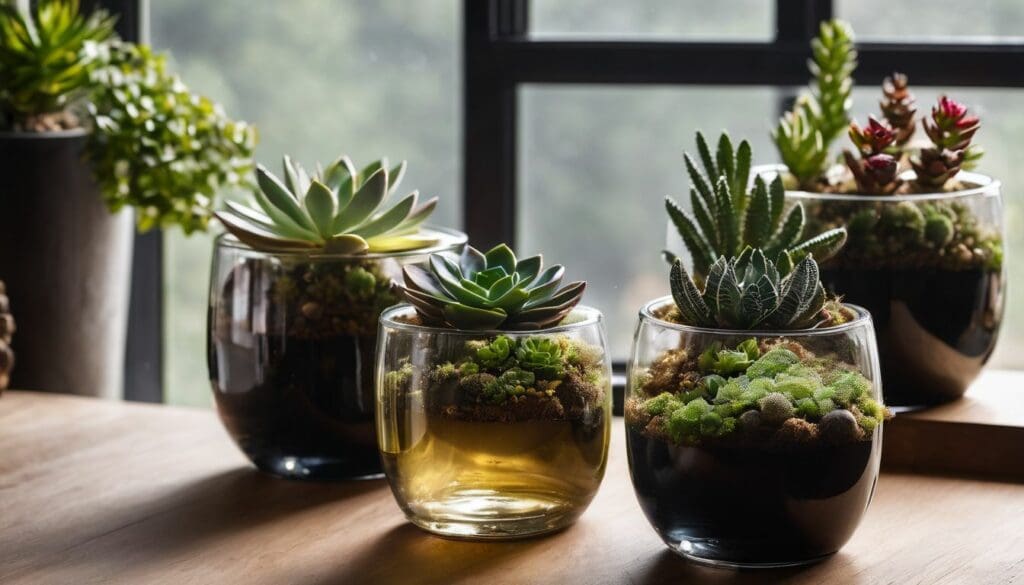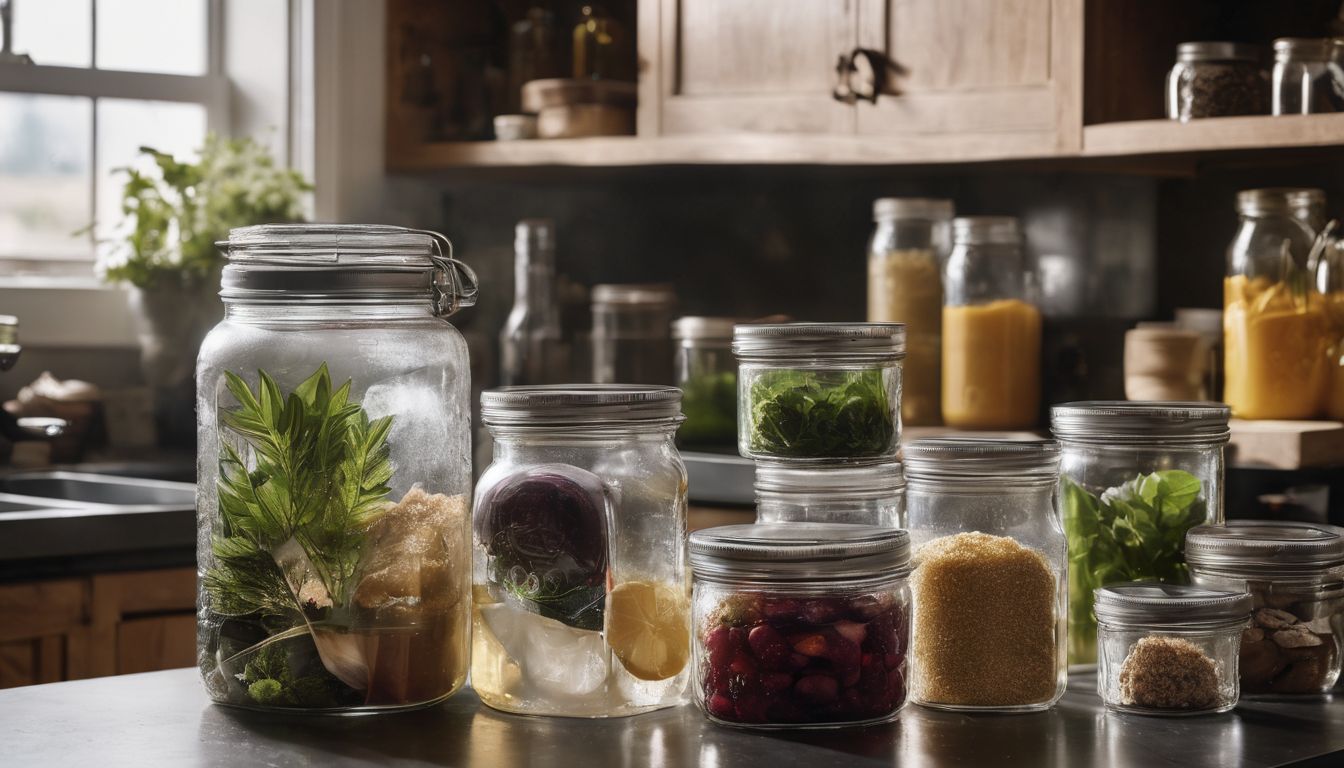Are you tired of your home looking like everyone else’s? Upcycling in interior design is now more than just a buzzword; it’s a movement reshaping our living spaces. Our blog will guide you through transforming everyday objects into unique and stylish home décor elements.
Discover how to make your space stand out!
Key Takeaways
- Upcycling uses old or discarded materials to create functional and artistic home décor, enhancing rather than breaking down the original item.
- It’s a cost – effective and sustainable way to decorate homes, encouraging creativity while reducing waste and preserving natural resources.
- You can upcycle various items such as furniture, plant containers, and lighting fixtures for a unique touch that personalises your living space.
- Undertaking DIY projects or purchasing from local artisans supports community craftsmanship and promotes eco-friendly practices within home design.
- By engaging in upcycling, individuals contribute to environmental sustainability, showcase their creativity, and reduce their carbon footprint through mindful consumption.
What is Upcycling?
Upcycling is the process of transforming discarded or old materials into something functional and beautiful. It differs from recycling as it aims to enhance the original material rather than breaking it down completely.
Definition
Upcycling transforms unwanted or discarded materials into new, useful products with higher artistic or environmental value. It takes creative reuse to another level by repurposing items that might otherwise end up in landfills.
Thrifty and sustainability-minded individuals often turn to this method to revamp their homes without depleting more resources. Through upcycling, salvaged materials get a second life as trendy, one-of-a-kind home décor pieces.
In contrast to recycling, which typically involves breaking down products into raw materials, upcycling keeps the original materials largely intact. This process enhances the item’s quality and reduces the need for production using new resources.
Every act of upcycling not only echoes a commitment to sustainable living but also adds unique character and style to interior spaces through vintage touches and ecofriendly design.
Difference from recycling
When considering upcycling in home décor, it’s important to note the distinction from recycling. Upcycling involves transforming old or discarded items into something of higher value without processing them back into raw materials.
This process requires creativity and craftsmanship to breathe new life into items that may have otherwise been disposed of, reducing waste and adding unique character to your home.
In contrast, recycling focuses on breaking down materials such as glass, paper, or plastic into their raw form for manufacturing new products. While both practices contribute positively to sustainability, upcycling showcases individuality by repurposing existing materials in innovative ways.
Why is Upcycling Trending in Home Décor?
Upcycling is becoming popular in home décor due to its sustainability and cost-effectiveness. People are increasingly conscious of the environmental impact of their choices, and upcycling allows them to reduce waste while creating unique and personalised pieces for their homes.
Sustainability
Upcycling in home decor supports sustainable living by reducing the demand for new resources and minimising waste. By repurposing or restoring items, such as furniture and accessories, individuals contribute to environmental conservation.
Embracing upcycling promotes the use of recycled materials, supporting eco-friendly decor while reducing one’s carbon footprint.
Incorporating sustainability into home design through upcycling encourages a mindset of creativity and resourcefulness. Embracing this approach not only contributes to a greener environment but also allows individuals to express their unique style while making conscious choices for the planet.
Cost-effectiveness
Upcycling in home decor is impressively cost-effective. Repurposing old furniture and materials can significantly reduce the cost of decorating a space, making it an attractive option for those on a budget.
The creative use of reclaimed materials not only adds a unique charm to your home but also saves money that would have been spent on buying new items.
Moreover, upcycling encourages resourcefulness by finding innovative ways to give old items a new lease of life. This approach allows for more sustainable and environmentally friendly choices without breaking the bank, aligning with your eco-conscious values while adding character to your living environment.
Examples of Upcycled Home Décor
Discover creative ways to upcycle home décor items such as furniture, plant containers, and lighting fixtures for a sustainable and unique touch to your living space.
Furniture
Refresh your home with upcycled furniture that adds character and sustainability to your space. Repurposed items like old wooden pallets can be transformed into chic coffee tables or shelving units, adding a unique touch to your decor without harming the environment.
Embrace sustainable living by choosing restored furniture made from salvaged materials, offering both stylish design and eco-friendliness to your home.
Revamp tired pieces of furniture with a fresh coat of paint or embrace the natural rustic look of reclaimed wood for an environmentally friendly decor makeover. Seek out local artisans who specialise in creating bespoke upcycled furniture, allowing you to support conservation efforts while adding personality to your living spaces.
Plant containers
Whether you have a small balcony or a spacious garden, upcycled plant containers can add an eco-friendly and stylish touch to your outdoor space. Repurposing items like old tin cans, wooden crates, or even tyres not only reduces waste but also gives your plants a unique home.
Adding these creative plant containers to your sustainable home design brings character and personality to your green space while supporting the conservation effort.
Repurposed plant containers are an excellent way to showcase your creativity and demonstrate environmental responsibility in your DIY home projects. Embracing upcycling in this aspect of home décor not only benefits the environment but also adds a personal touch that reflects your commitment to sustainable living.
Lighting
Lighting plays a crucial role in upcycled home décor, adding ambiance and functionality to any space. By repurposing old lamps or creating new ones from reclaimed materials, you can infuse your home with a unique touch while reducing waste.
Upcycling lighting fixtures also allows for creative expression, whether through redesigning vintage pieces or crafting one-of-a-kind lamps from unexpected items. Incorporating upcycled lighting not only contributes to sustainable living but also provides an opportunity to showcase your individual style and commitment to eco-friendliness.
When thinking about upcycling lighting for your home, consider the possibilities of using discarded materials such as glass bottles or industrial remnants. This environmentally conscious approach brings new life to old objects while contributing to the overall aesthetics of your décor.
How to Incorporate Upcycling in Home Décor
Get creative with DIY projects and repurposed furniture to add a unique touch to your home décor. Consider shopping from local artisans who specialise in upcycled items for a sustainable and stylish alternative.
DIY projects
Get creative and give new life to old furniture pieces by sanding, painting, or reupholstering them.
Shopping from local artisans
When shopping from local artisans, you support the community and reduce your carbon footprint. Artisans often use sustainable materials and traditional crafting techniques, resulting in unique, eco-friendly home décor items that reflect the local culture.
By choosing these one-of-a-kind pieces, you contribute to the preservation of artisanal skills while adding a personal touch to your living space.
Additionally, purchasing from local artisans fosters a connection between consumers and creators. This direct relationship allows for customisation and encourages transparency regarding materials and production methods.
Benefits of Upcycling in Home Décor
Upcycling in home decor not only reduces waste but also allows for personalisation and expresses eco-friendliness. It is a great way to contribute to sustainability while adding unique touches to your living space.
Reducing waste
Reducing waste is a significant benefit of upcycling in home décor. By transforming old or discarded items into new and functional pieces, upcycling minimises the amount of waste sent to landfills, contributing to a more sustainable environment.
Through creative repurposing, items that would have otherwise been thrown away are given new life, reducing the demand for raw materials and the energy required for traditional manufacturing processes.
Upcycling also promotes a shift towards a circular economy by extending the lifespan of products and materials. This approach reduces overall consumption and waste generation while encouraging a mindset focused on reusing resources in innovative ways.
Personalisation
Upcycling in home décor allows for personalisation, as it gives individuals the opportunity to create unique and customised pieces that reflect their own style and personality. Whether it’s repurposing old furniture with a fresh coat of paint or transforming vintage items into functional decor, upcycling provides a platform for expressing individual creativity.
By incorporating personal touches through upcycled pieces, one can infuse their living spaces with character and charm while making eco-friendly choices.
Embracing upcycling in home decor presents an avenue for showcasing one’s creativity and ingenuity while contributing to environmental sustainability. By taking part in creative upcycling projects, individuals are not only adding a personal touch to their living spaces but also actively participating in the global movement towards green home decor that reflects conscientious consumption and support for conservation efforts.
Eco-friendliness
When considering the eco-friendliness of upcycling in home décor, it’s essential to recognise the positive impact that repurposing items has on the environment. By reusing materials and products, there is a significant reduction in waste and a decrease in the demand for new resources.
This contributes towards conservation efforts and supports sustainable living practices. Embracing upcycled home décor items not only adds unique character to your living space but also reduces the carbon footprint associated with manufacturing new products.
The process of upcycling directly aligns with supporting environmental sustainability by promoting resourcefulness and reducing the strain on natural resources. This approach encourages individuals to make conscious choices that benefit both their homes and the planet by prioritising responsible consumption habits.
Conclusion
Incorporating upcycled home décor items adds a unique and personal touch to your living space. Embracing this trend not only reduces waste but also supports local artisans and small businesses.
By choosing upcycled pieces, you are making a positive impact on the environment while creating a stylish and sustainable home.
FAQs
1. What is upcycling in home décor?
Upcycling in home décor involves creatively reusing old or discarded materials to make stylish and unique furniture or accents for your space.
2. How does upcycling benefit my home decor?
By choosing upcycling, you add a personal touch to your home with one-of-a-kind pieces, and it’s also an eco-friendly way to decorate.
3. Can I do furniture restoration as part of upcycling at home?
Absolutely! Furniture restoration is a popular aspect of the trend where you can refresh outdated pieces instead of buying new ones.
4. Are there any special skills needed for upcycling décor items?
While some projects may require certain skills, many upcycling ideas are simple and need just creativity and basic DIY techniques.





